Introduction
How much do rabbits cost? Let’s find out.
From the adorable bunnies to the mischievous adults, we’re going to uncover the real cost of raising these furry bundles of joy. And, it’s going to be a whirlwind ride!
Picture this: fluffy bunnies bouncing around your home, their adorable little noses twitching with curiosity. As a passionate rabbit owner, I know the joys and challenges that come with these furry companions.
Well, in this article, we’re going to dig deep and uncover the truth behind the financial responsibilities of rabbit ownership. Get ready to hop into a world of budgets, expenses, and money-saving tips!
But hold on tight because we’re not just talking about adoption fees and the cost of a hutch. Oh no, my friend.
And let’s not forget about the thrill of finding the perfect rabbit breed for your budget. We’ll decode the mysterious world of rabbit prices, from adoption fees to upkeep expenses.
Along the way, we’ll learn how to save money on rabbit ownership, from DIY supplies to navigating the fluctuating market. We’ll dive into the nitty-gritty of rabbit food costs, housing expenses, and the ever-important veterinary care.
So, if you’re ready for an adventure filled with fluffy tails, adorable antics, and a dash of financial wisdom, then hold on tight! Get ready to jump into the world of rabbit ownership and discover the incredible joys and responsibilities that come with these adorable creatures.
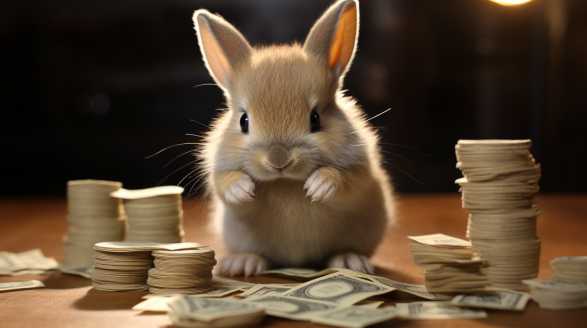
Key Takeaways
- The cost of raising a rabbit includes initial expenses such as the purchase price, housing, and supplies, as well as ongoing costs like food, veterinary care, and grooming.
- Adopting a rabbit can be a more affordable option, with adoption fees typically ranging from $50 to $200.
- Housing and supplies can range from $50 to $500, depending on the size and quality of the hutch or enclosure.
- Food costs include hay, pellets, and fresh vegetables, averaging around $50 per month.
- Veterinary care, vaccinations, and emergency expenses should be factored into the budget, with costs varying depending on the services needed.
- Grooming tools and cleaning supplies can range from $5 to $20 per item and $5 to $15 per month, respectively.
- It’s important to consider the ongoing expenses and the long-term commitment of rabbit ownership before bringing a bunny home.
- Understanding the breeds and their associated costs can help find a rabbit that suits your budget.
- Purebred rabbits tend to have higher initial costs, but prices can vary based on breed, lineage, and reputation of the breeder.
- Hidden costs, including bedding, food, grooming, and unexpected expenses should be budgeted for.
- DIY supplies and homemade treats can help save money, while also providing customization and creative solutions.
- It’s essential to balance DIY projects with store-bought supplies, especially for essential items like cages and enclosures.
- Factors that contribute to rabbit price fluctuations include supply and demand, breeder reputation and quality, breeding seasons, market trends, and external factors like disease outbreaks and regulations.
- Research, patience, and diversification can help navigate and adapt to price fluctuations in the rabbit market.
- Saving money on rabbit ownership can be achieved through smart shopping, preventive measures, and building relationships within the rabbit community.
- The joys of rabbit ownership outweigh the costs, as rabbits bring immeasurable love, companionship, and joy to our lives.
The Complete Guide to Understanding Rabbit Prices: From Adoption to Upkeep Expenses
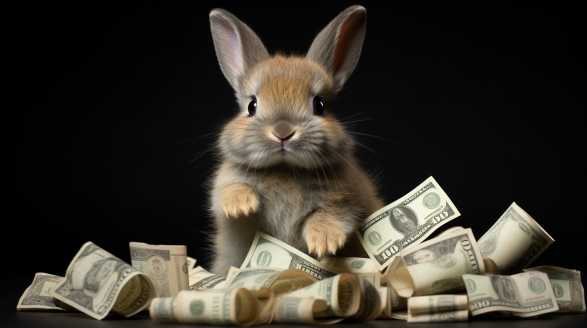
As a passionate rabbit lover and owner, I understand the desire to bring home a furry friend that hops around your home and fills it with love and joy. But before embarking on this adorable journey, it’s essential to be fully aware of the associated costs.
Let’s dive in!
Adopting A Rabbit: A Wholesome Experience
Adopting a rabbit can be a fulfilling and heartwarming experience. Not only will you be giving a loving home to a furry companion, but you might also find yourself with a new best friend for life.
- Research: Gain knowledge about different rabbit breeds, their temperaments, and care requirements. Understand their lifespan, grooming needs, and diet preferences to make an informed decision.
- Adoption sources: Look for reputable animal shelters, rescue centers, or breeders that prioritize the welfare of their rabbits. Avoid purchasing from online marketplaces or pet stores promoting unethical breeding practices.
- Application process: Many adoption agencies have an application process to ensure a suitable match between the rabbit and the potential owner. Answer their questions honestly and provide details about your living situation, experience, and dedication to responsible rabbit ownership.
- Adoption fees: Adoption fees generally cover essential services such as spaying or neutering, vaccination, and microchipping. These fees can vary depending on the source, breed, and location, ranging from $50 to $200.
Rabbit Upkeep Expenses: A Budgetary Balancing Act
Once you bring home your adorable bunny, there are ongoing expenses to keep in mind. By understanding and planning for these costs, you can ensure your rabbit’s well-being without any financial surprises.
1. Housing and Supplies
- A proper rabbit hutch or enclosure: Prices for hutches range from $50 to $500, depending on size, quality, and designs.
- Bedding: Choose cozy options such as straw, hay, or shredded paper, which range from $5 to $20 per month.
- Litter boxes and litter: Help maintain cleanliness with litter boxes ($10 to $30) and litter pellets ($5 to $15 per bag).
- Water bottles and food bowls: Expect to spend around $10 to $20 for quality feeding equipment.
2. Food and Treats
- Fresh hay: Rabbits require an unlimited supply of fresh hay, like Timothy hay, which costs around $10 to $20 per month.
- Pellets: High-quality pellets formulated for rabbits can cost between $10 to $20 per bag.
- Fresh vegetables and fruits: Include a variety of leafy greens and occasional fruits in your rabbit’s diet. Costs vary based on availability and season but typically range from $10 to $30 per month.
- Treats: While treats are not essential, they do provide extra delight for your bunny. Budget approximately $5 to $10 per month for occasional treats.
3. Medical Expenses
- Veterinary visits: It’s essential to schedule regular check-ups to ensure your rabbit’s health and well-being. Costs for routine exams range from $30 to $100 per visit.
- Vaccinations: Vaccinations protect your rabbit against common diseases and can cost around $20 to $50 per year.
- Spaying or neutering: These procedures promote a healthier life and minimize rabbit population, with costs averaging between $100 to $300.
- Emergency care: Unfortunately, unexpected health concerns can arise. Having an emergency fund set aside for potential medical costs is crucial for any responsible rabbit owner.
4. Grooming and Cleaning
- Brushes and nail clippers: Regular grooming tools, like slicker brushes and nail clippers, range from $5 to $20 per item.
- Cleaning supplies: Keep your rabbit’s living area clean with pet-safe cleaning products costing approximately $5 to $15 per month.
Wrapping Up
Understanding rabbit prices and the ongoing expenses involved is vital to being a responsible and committed rabbit owner. By researching, planning, and budgeting properly for adoption and upkeep expenses, you can provide the best possible care for your furry friend.
So hop to it and prepare to embark on a fantastic journey with your adorable new companion!
Comparing the Costs of Different Rabbit Breeds: Finding the Right Fit for Your Budget
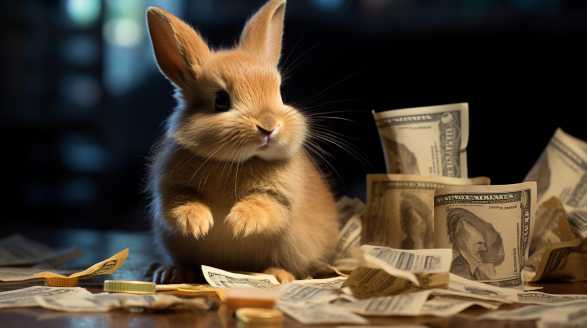
As a passionate rabbit lover, I have always believed that every pet deserves the best care and attention, no matter the size of my budget. In my quest to find the perfect rabbit breed, I embarked on a fascinating journey to explore the costs associated with different rabbit breeds.
So, join me as we unravel the world of rabbit breeds and find the one that perfectly suits your budget!
The Wonderful World of Rabbit Breeds
Before we dive into the nitty-gritty of costs, let’s explore the diverse world of rabbit breeds. From cuddly lops to energetic dwarfs and elegant angoras, there is a breed for every rabbit enthusiast.
Why Cost Matters?
While it’s tempting to focus solely on the cuteness and charm of a particular breed, it’s crucial to evaluate the associated costs to ensure you are financially prepared. Owning a rabbit involves more than just purchasing the furry friend.
By considering the costs beforehand, you can make an informed decision and avoid any surprises down the rabbit hole!
Cost Factors to Consider
When it comes to budgeting for a rabbit, several factors contribute to the overall expenses. Here is a breakdown of the essential cost components:
Initial Purchase Price
The first cost you encounter is the initial purchase price of the rabbit. Different breeds come with varying price tags, which can range from $20 to $200.
Keep in mind that the initial cost should be considered in conjunction with other long-term expenses.
Housing and Set-up
Rabbits require a comfortable and safe habitat. This means investing in a suitable hutch or cage, bedding, litter boxes, water bottles, and food bowls.
Generally, expect to spend anywhere from $50 to $250 or more on the initial setup.
Food Expenses
Rabbits have unique dietary needs that consist of hay, fresh vegetables, and rabbit pellets. While hay should be available at all times, fresh vegetables and pellets need to be replenished regularly.
Veterinary Care
Just like any other pet, rabbits require routine veterinary check-ups, vaccinations, and potential treatments for illnesses or injuries. Veterinary costs can differ depending on your location and the services required.
Grooming and Supplies
Rabbits, especially long-haired breeds like angoras, require regular grooming to maintain their fur’s health and cleanliness. This includes brushes, nail clippers, and potentially professional grooming services.
Comparing Rabbit Breeds: Unveiling the Costs
Now that we have an understanding of the key cost components, it’s time to look into the world of rabbit breeds and their specific financial implications. Here’s a comparison of some popular rabbit breeds and their associated costs:
1. Holland Lop
- Initial purchase price: $50 to $100
- Housing and set-up: $100 to $200
- Food expenses: $25 to $50 per month
- Veterinary care: $100 to $300 per year
- Grooming and supplies: $20 to $50 per year
2. Mini Rex
- Initial purchase price: $20 to $50
- Housing and set-up: $50 to $150
- Food expenses: $20 to $40 per month
- Veterinary care: $100 to $300 per year
- Grooming and supplies: $20 to $50 per year
3. Lionhead
- Initial purchase price: $50 to $100
- Housing and set-up: $100 to $250
- Food expenses: $20 to $40 per month
- Veterinary care: $100 to $300 per year
- Grooming and supplies: $20 to $50 per year
Making Your Decision: Affordability & Compatibility
Finding the right rabbit breed for your budget is not only about the costs but also about compatibility with your lifestyle. Consider the following factors when making your decision:
1. Affordability
Evaluate the overall costs associated with each breed and determine which aligns more comfortably with your budget. Remember to consider the initial purchase price, housing, food expenses, veterinary care, and grooming costs mentioned earlier.
2. Time and Attention
Consider how much time and attention you can devote to your rabbit. Some breeds may require more frequent grooming or have specific needs that demand a considerable time commitment.
3. Space Availability
Rabbit breeds vary in size, activity levels, and housing requirements. Assess the available space in your home and match it with a breed that will thrive within those parameters.
The Joyful Journey Awaits You
As you weigh the costs and explore different rabbit breeds, remember that ultimately, your chosen rabbit will become an adorable and cherished member of your family. Take your time, do thorough research, and never forget the joy and love that rabbits bring to our lives.
So, whether you’re drawn to the charming Holland Lop, the playful Mini Rex, or the fluffy Lionhead, let your heart and budget guide you in finding the perfect rabbit companion. Embrace the journey of rabbit ownership and revel in the joy that awaits you with your newfound furry friend by your side!
Are Purebred Rabbits Worth the Price Tag? Decoding the Expense
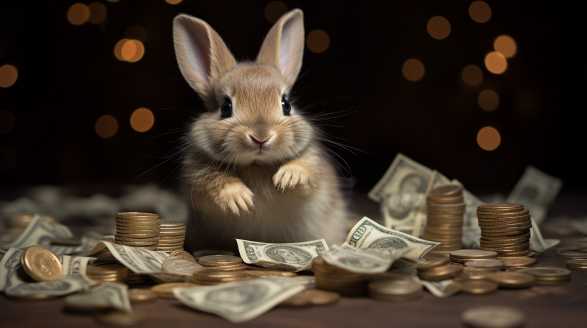
As a rabbit enthusiast, I have always been captivated by the wide variety of breeds available. From the adorable Floppy Lop to the regal Flemish Giant, there is a breed to suit every rabbit lover’s preference.
I will look into the world of purebred rabbits, decode the expenses associated with them, and help you determine if they are worth the investment.
Understanding Purebred Rabbits
Purebred rabbits are meticulously bred to uphold specific standards set by various rabbit breed associations. These standards encompass traits such as appearance, temperament, and breed-specific characteristics.
The Appeal of Purebred Rabbits
One of the most enticing aspects of purebred rabbits is their predictability. Due to the strict breeding standards, purebred rabbits tend to exhibit consistent traits and characteristics.
The Expenses Involved
While purebred rabbits have their admirers, it is essential to carefully consider the expenses associated with them before making a decision. Let’s break down the various costs you might encounter when purchasing and caring for a purebred rabbit.
1. Acquisition Cost
The acquisition cost of a purebred rabbit can vary significantly depending on the breed, lineage, and reputation of the breeder. To acquire a purebred rabbit, you can expect to pay anywhere from $50 to several hundred dollars, with rare or highly sought-after breeds commanding higher prices.
2. Additional Supplies
In addition to the initial cost of acquiring a purebred rabbit, there are several additional supplies you will need to invest in. These include:
- A suitable rabbit hutch or enclosure ($50-$200)
- Rabbit-safe bedding material ($10-$50)
- Food and water bowls ($10-$30)
- Rabbit-friendly toys and enrichment items ($10-$50)
- Veterinary visits and vaccinations ($50-$200 per year)
- Grooming tools and supplies ($10-$50)
Taking all these factors into account, we can see that the initial investment required for a purebred rabbit can quickly add up.
3. Breeding Costs
If you look into the realm of breeding purebred rabbits yourself, there are additional expenses to consider. These may include:
- The cost of purchasing a breeding pair ($100-$500+ per rabbit)
- Proper breeding facilities ($100-$500+)
- Health checks for breeding rabbits ($50-$100 per rabbit)
- Genetic testing to ensure quality breeding ($50-$150 per rabbit)
- Extra expenses for veterinary care and potential complications during the breeding process
Breeding purebred rabbits can be a rewarding experience, but it also comes with its own financial burdens.
Weighing the Pros and Cons
After decoding the expenses associated with purebred rabbits, it’s time to weigh the pros and cons to determine if they are truly worth the price tag.
Pros
- Predictability: Purebred rabbits offer a level of predictability in terms of appearance, temperament, and breed-specific traits.
- Breeder Support: Reputable breeders often provide ongoing support and advice, making the transition into owning a purebred rabbit smoother.
- Potential Show Competitions: If you are interested in showcasing your rabbit at competitions, purebred rabbits are typically required to participate.
- Breed-Specific Characteristics: Each breed of purebred rabbit comes with its own unique set of characteristics, allowing you to choose the perfect match for your preferences.
Cons
- Higher Initial Investment: Purebred rabbits often come with a higher acquisition cost compared to mixed breeds or rescues.
- Genetic Health Concerns: Some purebred rabbits are prone to certain genetic health issues, which may require additional veterinary care and expenses.
- Limited Availability: Not all breeds of purebred rabbits are readily available, which can make finding your desired breed more challenging.
- Responsibility as a Breeder: Breeding purebred rabbits is a significant responsibility and can be demanding both financially and emotionally.
Ultimately, the Decision is Yours
Are purebred rabbits worth the price tag? The answer to this question depends on your personal preferences, budget, and commitment level.
However, if you are more focused on finding a loving companion and are flexible on breed, adopting a mixed breed or rescue rabbit might be a more affordable and rewarding option.
When considering the expense of purebred rabbits, it’s important to remember that the initial cost is just the beginning. Ongoing expenses such as food, veterinary care, and supplies should also factor into your decision-making process.
Ultimately, whether the price tag of a purebred rabbit is worth it is a subjective choice that only you can make. By weighing the pros and cons, carefully considering the expenses involved, and ensuring you have the time, resources, and commitment necessary, you can make an informed decision that aligns with your desires and values in rabbit ownership.
Hidden Rabbit Costs: Beyond the Purchase Price
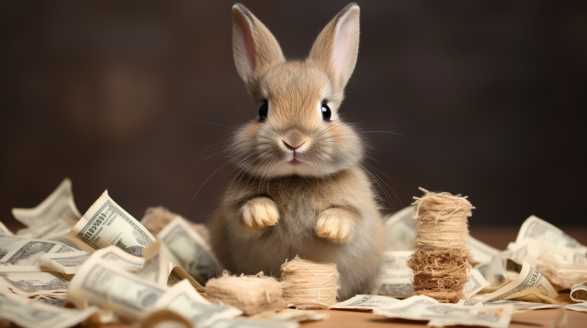
So, you’re thinking about getting a rabbit, huh? Well, before you hop into that decision, there are a few things you need to know.
I’m going to take you on a wild bunny ride exploring the hidden costs of rabbit ownership. Buckle up, folks!
The Initial Expenses
Before you even bring a rabbit home, you’ll need to think about the costs associated with getting set up. Here are some initial expenses to consider:
- Rabbit Hutch: Your bunny is going to need a comfortable and secure hutch to call home. Prices can vary depending on the size and quality, but expect to spend anywhere from $50 to $300 or more on a suitable hutch.
- Food and Water Supplies: Rabbits have specific dietary needs, so you’ll need to invest in rabbit pellets, fresh vegetables, and hay. Additionally, a water bottle or bowl will be necessary to keep your bunny hydrated.
- Litter Box: Just like cats, rabbits can be litter box trained. Consider purchasing a litter box and appropriate litter to keep your rabbit’s area clean and tidy.
- Toys and Enrichment: Rabbits love to play and explore, so providing them with toys and enrichment activities is essential for their mental and physical well-being.
Ongoing Expenses
Once the initial setup is complete, it’s time to tackle the ongoing costs associated with rabbit ownership. These include:
- Veterinary Care: Your rabbit’s health should be a top priority. Regular check-ups, vaccinations, and spaying/neutering (if necessary) can add up. It’s a wise idea to set aside a budget for potential medical emergencies too.
- Food and Treats: Rabbits require a balanced diet consisting of hay, fresh vegetables, and pellets. Treats can be given occasionally but should never make up a significant portion of their diet.
- Bedding and Litter: Rabbit bedding needs to be clean and comfortable. You’ll need to budget for fresh bedding regularly, plus litter for the litter box.
- Grooming: Rabbits are clean animals, but they do require regular grooming to keep their fur in good condition. This includes brushing, nail trimming, and occasional bathing.
- Toys and Enrichment: Keep your bunny entertained and mentally stimulated with a variety of toys and enrichment activities. This not only makes life more enjoyable for your furry friend but can also prevent destructive behaviors.
Unexpected Expenses
Owning a rabbit can sometimes throw unexpected curveballs your way. It’s important to be prepared for these surprises and have a buffer in your budget to handle them.
- Medical Emergencies: Just like any living creature, rabbits can get sick or injured. Veterinary bills for unexpected health issues can be significant, so having an emergency fund specifically for your rabbit is vital.
- Chewing Damage: Rabbits have a natural instinct to chew, and they can wreak havoc on furniture, wires, and other items in your home. Setting aside funds to repair or replace damaged items is a smart move.
- Upgrading Space: As your bunny grows, they may require a larger living area. This means investing in a bigger hutch or creating a safe and spacious playpen for them to roam around.
- Travel: Boarding or Pet Sitting: If you plan on traveling and can’t bring your rabbit along, you’ll need to budget for boarding or pet sitting services.
Time and Effort
Beyond the financial aspects, owning a rabbit requires a significant investment of time and effort. Here’s what you need to be prepared for:
- Feeding and Cleaning: Rabbits need fresh food and water daily. Their living area, including the litter box, will need regular cleaning to maintain hygiene.
- Socialization and Exercise: Rabbits are social creatures and require daily interaction with their owners. They also need plenty of exercise outside their hutch to prevent boredom and promote overall health.
- Training and Bonding: Establishing a bond with your rabbit takes time and patience. Litter box training, teaching commands, and building trust are all part of the process.
- Regular Grooming: Keeping your rabbit’s fur clean and free from mats requires regular grooming sessions. It’s also an excellent opportunity for bonding with your furry friend.
Is Rabbit Ownership Right for You?
Now that you’re aware of the hidden costs associated with rabbit ownership, you might be wondering if it’s the right choice for you. Owning a rabbit can be rewarding and fulfilling, but it requires commitment, time, and financial resources.
- Can I afford the initial setup costs, ongoing expenses, and potential unexpected expenses?
- Do I have enough time to dedicate to daily care, socialization, and exercise?
- Am I prepared for the responsibilities of grooming, training, and providing a safe environment?
- Will I be able to provide proper veterinary care and address any health issues that may arise?
Remember, rabbits can live anywhere from 8 to 12 years or more, so owning one is a long-term commitment. If you can answer these questions positively and with confidence, then perhaps a rabbit is the perfect companion for you!
Owning a rabbit goes beyond the initial purchase price. The hidden costs, both financial and personal, are important factors to consider.
If you’re ready to embark on this journey and give a rabbit a loving home, get prepared, stay attentive, and enjoy the incredible experience that comes with being a rabbit owner.
Medical Expenses for Rabbits: A Deep Dive into Veterinary Costs
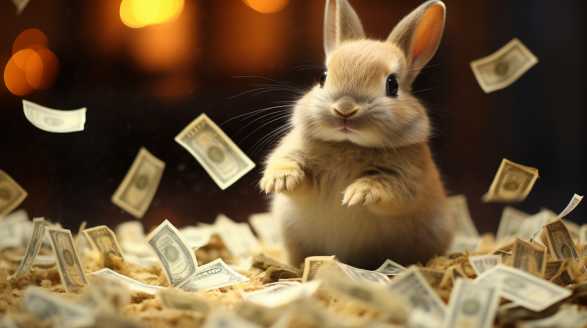
As a rabbit enthusiast and proud owner of several adorable furry friends, I can certainly attest to the fact that caring for these delicate creatures involves more than just feeding them fresh carrots and providing them with cozy hutches. One aspect of rabbit ownership that cannot be overlooked is the cost associated with their veterinary care.
The Importance of Regular Check-Ups
Just like humans, rabbits require regular check-ups to ensure their overall health and well-being. These routine visits to the veterinarian act as preventive measures, helping to identify any underlying health issues before they become serious and costly to treat.
Vaccinations: Protecting Your Bun from Harmful Diseases
Vaccinations are a crucial aspect of a rabbit’s health care regime, providing protection against a variety of potentially harmful diseases such as viral hemorrhagic disease and myxomatosis. The cost of vaccinations can vary based on the specific vaccines required and the veterinary clinic’s pricing structure.
Dental Care: Bunnies Need Good Teeth Too!
Rabbits have constantly growing teeth, and if not properly maintained, dental issues can quickly arise. Regular dental check-ups, which may involve teeth trimming, can help prevent potentially painful conditions such as malocclusion.
On average, dental procedures for rabbits can range from $100 to $300.
Spaying and Neutering: Controlling the Bunny Population
Spaying and neutering your rabbits is not only essential for population control but also for their overall health. Unspayed female rabbits have a high risk of developing uterine cancer, while unneutered males may exhibit aggressive behavior and become prone to certain medical conditions.
Treating Common Ailments: From Snuffles to GI Stasis
Despite our best efforts to keep our rabbits in optimal health, they may still encounter common ailments such as snuffles (upper respiratory infections) or GI stasis (gastrointestinal blockages). The cost of treating these conditions can vary depending on their severity and the treatment required.
Surgical Procedures: Occasionally Necessary, but Costly
Just like any other pet, rabbits may require surgical interventions at some point in their lives. These could range from removing benign tumors to more complex procedures such as repairing a broken limb.
Emergency Care: When the Unexpected Happens
Sometimes, we find ourselves in situations where our rabbits require immediate medical attention due to accidents or sudden illnesses. Emergency veterinary care can be quite expensive, often ranging from $500 to $1,500 depending on the nature of the emergency and the treatments needed.
Tips for Lowering Veterinary Costs
While veterinary expenses for rabbits can add up quickly, there are ways to mitigate these costs without compromising on the quality of care provided to your fluffy companions. Consider the following tips:
- Research and compare prices among different veterinary clinics in your area.
- Look for rabbit-specific veterinarians who may have a deeper understanding of their unique medical needs.
- Consider pet insurance to help cover unexpected medical expenses.
- Maintain a healthy diet and provide appropriate exercise to minimize the risk of certain health conditions.
- Practice good oral hygiene by offering chew toys and appropriate crunchy vegetables to promote dental health.
Owning rabbits brings immeasurable joy and companionship, but it also entails a responsibility to provide them with proper veterinary care. From regular check-ups to treating common ailments, dental care, vaccinations, and surgical procedures, the medical expenses for rabbits can vary significantly.
Remember, a healthy bunny is a happy bunny!
A Comprehensive Look at the Cost of Rabbit Food and Treats
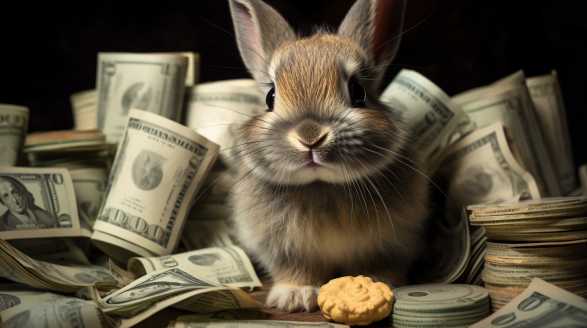
As a rabbit owner, I understand the importance of providing my furry friend with a well-balanced diet. But, one question that often comes to mind is: how much does rabbit food and treats cost?
So, let’s hop right in!
The Basics: Rabbit Food
Rabbits are herbivores, and their diet primarily consists of hay, pellets, and fresh vegetables. Let’s explore each of these components and their associated costs:
1. Hay
Hay is an essential part of a rabbit’s diet as it provides essential fiber and helps maintain healthy dental hygiene. The cost of hay can vary depending on the quality and type.
- Timothy hay: $5 to $10 for a 5-pound bag
- Orchard grass: $7 to $15 for a 5-pound bag
- Alfalfa hay: $6 to $12 for a 5-pound bag
2. Pellets
Pellets are another important aspect of a rabbit’s diet, providing necessary nutrients. It is crucial to choose pellets specifically formulated for rabbits to ensure a healthy balance of vitamins and minerals.
- Basic rabbit pellets: $5 to $10 for a 5-pound bag
- Premium rabbit pellets: $10 to $20 for a 5-pound bag
3. Fresh Vegetables
Fresh vegetables are a great way to incorporate variety into your rabbit’s diet and provide additional nutrients. While some vegetables can be found in your kitchen, others may require a trip to the grocery store or farmers’ market.
- Common vegetables (carrots, kale, celery, etc.): $5 to $10 per week
- Specialty vegetables (parsley, cilantro, dandelion greens, etc.): $2 to $5 per week
Healthy Snacks: Rabbit Treats
Just like us, rabbits enjoy indulging in tasty treats from time to time. Rabbits have a sweet tooth too, but it is crucial to ensure that treats are given in moderation to avoid health issues like obesity.
1. Commercial Treats
Commercial rabbit treats are widely available, providing a convenient option for pet owners. These treats usually come in various flavors and textures, giving your rabbit a delightful snacking experience.
- Basic commercial treats: $3 to $8 per pack
- Premium commercial treats: $5 to $12 per pack
2. Homemade Treats
If you enjoy being in the kitchen, you can also make homemade treats for your rabbit. This not only allows you to have control over the ingredients but can also be a fun bonding activity with your furry friend.
- Homemade treats: $2 to $10 depending on the recipe and ingredients
Additional Costs to Consider
Apart from food and treats, there are a few additional costs to consider when budgeting for your rabbit’s nutritional needs:
1. Water
Access to clean, fresh water is crucial for rabbits. Consider investing in a sturdy water bottle or bowl to ensure your rabbit stays hydrated.
- Water bottle: $5 to $15 depending on the size and quality
- Water bowl: $2 to $8 depending on the material and design
2. Food Dishes
Sufficient food dishes are necessary to keep your rabbit’s meals organized and prevent messes. Look for easy-to-clean options that are rabbit-friendly.
- Food dishes: $5 to $15 depending on the material and design
3. Storage
Properly storing your rabbit’s food and treats is essential to maintain freshness and prevent spoilage. Consider investing in airtight containers to extend the shelf life of hay and pellets.
- Airtight containers: $10 to $30 depending on the size and quality
Providing your rabbit with a nutritious diet is essential for their overall health and wellbeing. By understanding the cost of rabbit food and treats, you can budget effectively to ensure your furry friend receives the best care possible.
So, embrace your role as a responsible rabbit owner and hop on the journey of providing your fluffy friend with delicious, nutritious, and cost-effective meals!
How Much Does It Cost to House a Rabbit? Exploring Cage and Enclosure Options
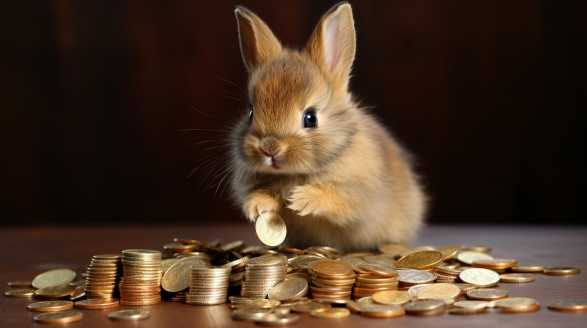
As a proud rabbit owner for the past five years, I have learned a thing or two about the cost of housing these adorable furry friends. When I first decided to bring a rabbit into my home, I had no idea how much it would actually cost to provide a safe and comfortable living space for them.
So, if you’re curious about the cost associated with housing a rabbit, you’ve come to the right place! Let’s explore the options together.
The Basic Rabbit Cage
The most common and affordable option for housing a rabbit is a basic wire cage. These cages typically range in price from $20 to $50, depending on the size and quality.
It should also have a solid bottom to prevent any injuries to their delicate feet.
Key features to look for in a basic rabbit cage include:
- Easy access door for cleaning and feeding.
- A secure latch to prevent any accidental escapes.
- Removable bottom tray for convenient cleaning.
- A separate sleeping area or hutch for privacy.
Upgrade to a Multi-Level Rabbit Condo
If you’re looking to provide your rabbit with a more spacious and stimulating living environment, a multi-level rabbit condo might be the perfect option. These condos often consist of multiple levels connected by ramps or tunnels, allowing your rabbit to explore and play to their heart’s content.
While they tend to be pricier than basic cages, ranging from $100 to $300, multi-level rabbit condos offer several advantages:
- Increased living space for your rabbit to exercise and hop around.
- Multiple levels provide mental and physical stimulation.
- Opportunities for customization with additional toys and platforms.
- Some condos come with attached playpens for outdoor exploration.
Rabbit Hutch: The Outdoor Option
For those lucky enough to have a spacious backyard, an outdoor rabbit hutch can be an excellent choice. These wooden enclosures are designed specifically for outdoor use and ensure your rabbit’s safety while still allowing them to enjoy fresh air and natural surroundings.
Outdoor rabbit hutches can range in price from $150 to $500, depending on the size and quality. Here are some considerations when choosing a rabbit hutch:
- Sturdy construction to withstand different weather conditions.
- Adequate ventilation for fresh air circulation.
- Raised design to protect from predators.
- A separate enclosed area for sleeping and resting.
Remember, outdoor rabbits need extra care to ensure their safety from predators and harsh weather conditions. Always provide them with plenty of shade, fresh water, and secure fencing.
DIY Rabbit Enclosures: Budget-Friendly and Fun!
If you’re feeling creative and want to save some money, creating your own rabbit enclosure can be a rewarding option. Not only will it be customized to fit your rabbit’s needs, but it can also provide a unique and aesthetically pleasing addition to your home.
Here’s a list of materials you’ll need:
- Large wire grids or storage cubes.
- Cable ties or zip ties to secure the grids.
- Coroplast or sturdy plastic panels for the bottom.
- Zip ties or binder clips to attach the bottom panels.
- Optional: additional shelves, tunnels, and toys for customization.
Building your own rabbit enclosure allows you to tailor it to your rabbit’s specific needs, ensuring they have plenty of space to move around and explore. Plus, it can be a fun weekend project for the whole family!
Additional Costs to Consider
While the cost of the cage or enclosure is a significant factor, it’s important to remember that there are other expenses associated with housing a rabbit. Here are some additional costs to consider:
- Bedding and Litter: The price of bedding materials such as hay, straw, or wood shavings can vary, but expect to spend around $10 to $20 per month.
- Food and Water: A healthy diet is crucial for your rabbit’s well-being. Budget around $20 to $40 per month for high-quality rabbit pellets, fresh vegetables, and unlimited hay. Additionally, consider purchasing a water dispenser to ensure a constant supply of fresh water.
- Toys and Accessories: Rabbits are curious creatures that require mental and physical stimulation. Budget for toys, tunnels, and chewable items to keep your rabbit entertained and prevent boredom.
- Veterinary Care: Just like any other pet, rabbits may require regular check-ups, vaccinations, and occasional veterinary care. Be prepared for unexpected expenses in case of illness or emergency.
- Grooming: Depending on the breed, rabbits may require regular grooming, including nail trimming and brushing. Consider the cost of grooming tools or professional grooming services.
Owning a rabbit is a delightful experience, and providing them with a suitable living space is crucial for their health and happiness. From affordable wire cages to luxurious multi-level condos and outdoor hutches, there are various options available to fit different budgets and lifestyles.
So, if you’re considering adding a furry friend to your family, don’t let the cost deter you. With a little planning and consideration, you can create the perfect home for your beloved rabbit without breaking the bank.
How to Save Money on Rabbit Ownership: Tips and Tricks for Budget-Friendly Pet Care
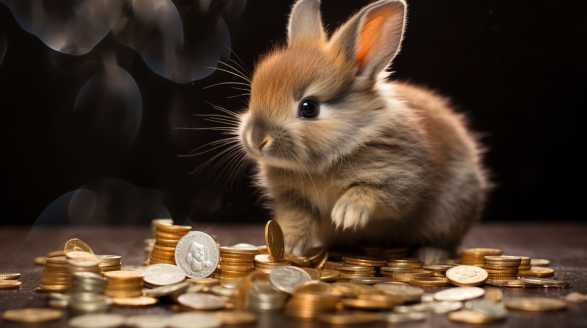
Are you a proud rabbit owner, or considering bringing a fluffy little bunny into your home? Well, let me tell you, rabbits make fantastic pets!
However, just like any other pet, rabbits come with their fair share of expenses. But worry not, my friend, because in this article, I’m going to share with you my top tips and tricks for saving money on rabbit ownership.
Assessing Your Bunny Essentials
Evaluate your Rabbit’s Housing Needs
One of the first things you’ll need to consider when adopting a rabbit is their housing. A proper enclosure provides security and comfort to your furry friend.
Here are some affordable alternatives:
- Repurposed furniture: Convert an old bookshelf or sideboard into a spacious and cozy rabbit habitat.
- DIY pen: Build a large pen using pet-friendly wire mesh panels, which are both affordable and customizable.
- Exercise areas: Create additional play areas using cardboard boxes or collapsible wire enclosures.
Opt for Budget-Friendly Bedding
Rabbits love a soft and cozy place to rest, and good bedding is essential for their comfort. However, bedding costs can add up quickly.
- Recycled paper bedding: Economical and highly absorbent, recycled paper bedding is an excellent choice for rabbits.
- Hay as bedding: A layer of hay in your rabbit’s enclosure not only makes for a comfortable resting spot but also encourages natural foraging behavior.
Bunny-proof Your Home
Rabbits are curious creatures and like to explore their surroundings. However, a rabbit exploring unsupervised can lead to potential hazards and costly damages.
- Electrical cords: Protect cords with split tubing or cover them with PVC pipes to prevent chewing.
- Furniture protection: Place inexpensive plastic corner guards on furniture edges to deter chewing.
- DIY toys: Provide your rabbit with plenty of safe and engaging toys, such as cardboard tubes or homemade chewing toys.
Feed Your Bunny Wisely
Opt for Fresh Produce
Rabbits require a balanced diet that includes hay, fresh vegetables, and a measured amount of rabbit pellets. While pellets are necessary, veggies should make up the bulk of their diet.
- Seasonal produce: Choose vegetables and herbs that are in season as they tend to be more affordable.
- Bulk purchases: Buy vegetables in bulk and freeze them to save money and reduce waste.
Grow Your Own Greens
What’s better than providing fresh, pesticide-free greens for your bunny? Growing them yourself!
Give these bunny-approved plants a try:
- Wheatgrass: Super easy to grow and packed with vitamins, wheatgrass makes a perfect treat for your rabbit.
- Herbs: Plant rabbit-friendly herbs like parsley, basil, and dill, which provide both nutrition and enrichment.
Hay Hacks
High-quality hay is a staple in a rabbit’s diet, aiding in digestion and maintaining oral health. Here are some smart ways to save on hay:
- Buy in bulk: Purchase hay in larger quantities, as it is generally cheaper that way.
- Seek local sources: Check out local farms or feed stores that sell hay in bulk at a lower cost.
Veterinarian Care on a Budget
Find a Reputable yet Affordable Vet
Routine vet care is important to keep your rabbit healthy, but it can become quite expensive. Here’s how to save on veterinary costs:
- Research local vets: Look for veterinarians who specialize in small animals, as they often have more affordable fees.
- Spay/neuter clinics: Check for low-cost or subsidized spaying/neutering programs offered by shelters or animal welfare organizations.
Preventive Measures
Prevention is key when it comes to keeping your rabbit healthy and avoiding costly veterinary bills. Here are a few simple steps to take:
- Bunny grooming: Regular grooming prevents hairballs and costly intestinal blockages, keeping your bunny at their best.
- Teeth maintenance: Provide safe chew toys and consider regular tooth trims to prevent dental issues.
Seek Out Community Support
Join Rabbit Enthusiast Groups
Getting involved with local or online rabbit lover communities can be a wealth of resources and support. Here’s how they can help you save:
- Shared purchases: Group orders of hay, pellets, and other supplies can lead to significant savings when bought in bulk.
- Knowledge sharing: Learn from experienced rabbit owners who have encountered budget-saving tips firsthand.
Foster or Adopt
Fostering or adopting a rabbit instead of buying one from a breeder can save not only money but also a life. Many rescue organizations charge minimal adoption fees and provide important veterinary care for their rabbits.
Congratulations! You’ve now become a savvy rabbit owner, ready to provide a loving home while keeping your budget intact.
So go ahead and embrace the joy of rabbit ownership without breaking the bank!
DIY vs. Store-Bought Rabbit Supplies: Making the Most of Your Budget
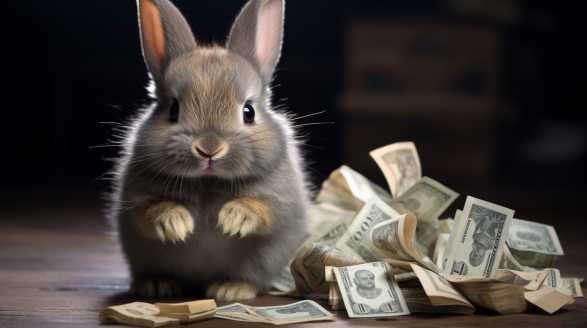
As a passionate rabbit owner, I have always been on the lookout for ways to provide my fluffy companions with the best supplies without breaking the bank. After extensive research and personal experience, I’m excited to share my findings on the age-old debate of DIY versus store-bought rabbit supplies.
The Joy of DIY Rabbit Supplies
There is something truly satisfying about creating your own rabbit supplies. Not only does it allow you to save some money, but it also provides an opportunity for creativity and customization.
- DIY Rabbit Toys
- Toilet paper roll treat dispensers: Stuff them with hay or your rabbit’s favorite treats to keep them entertained for hours.
- Cardboard castle: Cut and assemble a castle out of cardboard boxes for your bunny to explore and hide in.
- Digging box: Fill a shallow plastic container with shredded paper or soil for your rabbit to dig to their heart’s content.
- Homemade Rabbit Treats
- Carrot and banana bites: Mash together a banana and grated carrot, form small balls, and bake until chewy.
- Oat and apple cookies: Mix oats, grated apple, and a little honey, then bake for a healthy and delicious treat.
- DIY Bunny Home
- Repurposed furniture: Transform an old bookshelf into a multi-level rabbit condo by adding ramps and platforms.
- Caged garden plot: Create a safe outdoor space for your rabbit using wire mesh and wooden posts.
Weighing the Pros and Cons of Store-Bought Supplies
While DIY projects are a fantastic option, let’s not overlook the convenience of store-bought rabbit supplies. These products are designed specifically for bunnies, ensuring their safety and meeting their specific needs.
The Pros:
- Quality assurance: Store-bought supplies are typically made with rabbit-friendly materials, minimizing the risk of harm to your furry friend.
- Convenience: Purchasing ready-made products saves time and effort, allowing you to focus more on enjoying your rabbit’s company.
- Variety: Pet stores offer a wide range of specialized supplies, ensuring that you can find the perfect fit for your rabbit’s needs.
The Cons:
- Cost: Store-bought supplies can be more expensive compared to DIY alternatives, especially if you have multiple rabbits or are on a tight budget.
- Standardization: While variety is a pro, certain store-bought supplies may not perfectly suit your rabbit’s preferences or unique requirements.
Striking a Balance: Mixing DIY and Store-Bought Supplies
Now that we understand the pros and cons of both DIY and store-bought rabbit supplies, let’s explore ways to combine the best of both worlds. By finding a balance between the two, you can optimize your budget while ensuring the happiness and well-being of your beloved bunnies.
1. Determine What’s Essential
Identify the supplies that are essential for your rabbit’s health and happiness. These are the items you might want to consider purchasing from a store to ensure quality and safety, such as:
- Cages and enclosures: Investing in a solid, secure, and appropriately sized cage is crucial for your rabbit’s comfort and safety.
- Food and water bowls: Opt for durable, non-toxic bowls designed for rabbits that are easy to clean and replace.
2. Get Creative with Accessories
When it comes to accessories, this is where DIY can shine. Save money by adding your personal touch.
- Bedding: Instead of buying pre-packed bedding, repurpose old towels or blankets by cutting them into suitable sizes for your rabbit’s enclosure.
- Chew toys: Collect branches from bunny-safe trees, such as apple or willow, and let your rabbit enjoy the natural, free chew toys.
- Hay feeders: Create your own hay feeders using wire baskets or repurposed containers, ensuring hay remains clean and accessible.
3. Splurge on Special Occasions
Indulge your rabbit on special occasions by investing in store-bought treats and toys to add excitement to their daily routine. These splurges can be reserved for birthdays, holidays, or just to show your bunny how much you love them.
While DIY projects offer creativity and cost-effectiveness, store-bought supplies ensure the comfort, safety, and specialized needs of your furry friends. By mixing both approaches, you can provide a stimulating environment for your rabbits without straining your budget.
Now hop to it and start creating a fantastic world for your fluffy companions!
So what are you waiting for? Grab those tools, unleash your inner DIY guru, and let your rabbits hop into a world that’s both budget-friendly and full of love!
Why Rabbit Price Fluctuations Occur: Understanding the Market
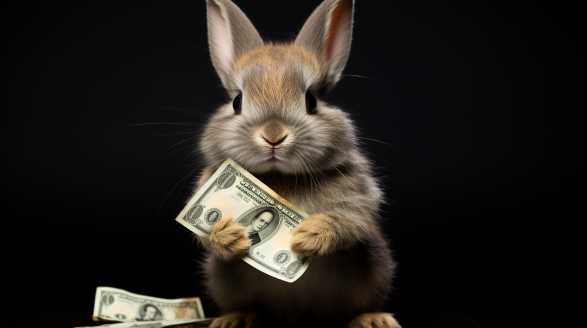
As a lover of rabbits, I have always been fascinated by the fluctuating prices of these adorable creatures. Whether you are a pet owner, a farmer, or simply curious about the market dynamics, understanding why rabbit prices go up and down can be quite perplexing.
So grab a carrot and join me on this journey!
Factors Influencing Rabbit Price Fluctuations
Demand and Supply
The fundamental economic principle of supply and demand plays a key role in determining rabbit prices. When there is a high demand for rabbits and a limited supply, prices tend to rise.
This delicate balance between consumer demand and breeder supply can shift rapidly, causing price fluctuations in the market.
Breeding Season
Rabbits have a natural breeding cycle, and their reproductive activity can significantly impact the supply of rabbits in the market. During the peak breeding season, when the doe is highly fertile, the supply of rabbits can surge, leading to a potential decrease in prices.
Understanding these breeding patterns can give breeders and buyers valuable insights into when to expect price fluctuations.
Market Trends and Trends of Possession
Fashion and Trends
Rabbits are not only popular as pets but also find themselves at the center of fashion and pop culture trends. When a particular rabbit breed becomes trendy, demand for it can skyrocket, leading to a surge in prices.
For example, when a famous celebrity is spotted with an adorable bunny, many people rush to get their own, creating a sudden spike in demand and subsequent price fluctuations.
Seasonal Demand
Rabbits often become a hot commodity during specific seasons. For instance, during Easter, the demand for rabbits as gifts or for thematic events rises significantly.
Similarly, during the winter holidays, cute rabbit-themed merchandise and decorations can lead to an uptick in prices as well.
Breeder’s Reputation and Quality
The reputation and quality of a breeder can also heavily influence rabbit prices. Breeders who have established themselves as experts in their field or have produced top-quality rabbits may charge higher prices.
On the other hand, breeders with a poor reputation or low-quality rabbits may struggle to sell their stock, resulting in lower prices.
The Impact of External Factors
Disease Outbreaks
Disease outbreaks within the rabbit population can have a devastating impact on prices. In cases where a highly contagious and deadly disease spreads among rabbits, breeders may be forced to take preventive measures, such as culling their stock.
Regional Factors and Regulations
Regional factors, such as government regulations and import/export laws, can also affect rabbit prices. Certain countries or regions may have restrictions on the import or export of rabbits, creating a limited supply and potentially increasing prices.
Strategies for Dealing with Rabbit Price Fluctuations
Research and Patience
For those considering buying or selling rabbits, research is key. Stay updated on market trends, breeding cycles, and any regulations that may affect prices.
Being patient and well-informed grants you an advantage in navigating the rabbit market.
Diversification
Breeding or owning a variety of rabbit breeds can help minimize the impact of price fluctuations. By having different types of rabbits, you can cater to various market demands and decrease the risk of being solely dependent on a single breed’s price stability.
Building Relationships
Establishing strong relationships with reputable breeders can prove beneficial during times of price fluctuations. Breeders who trust you as a reliable buyer may offer you better deals or notify you of upcoming litters before others.
Understanding why rabbit price fluctuations occur is essential for anyone involved in the rabbit market, whether as a pet owner, a breeder, or an enthusiast. Factors such as supply and demand, breeding seasons, market trends, and external factors like disease outbreaks and regulations all impact rabbit prices.
So, hop on and enjoy the ride!
From Bunnies to Adults: How Much Does It Cost to Raise a Rabbit?
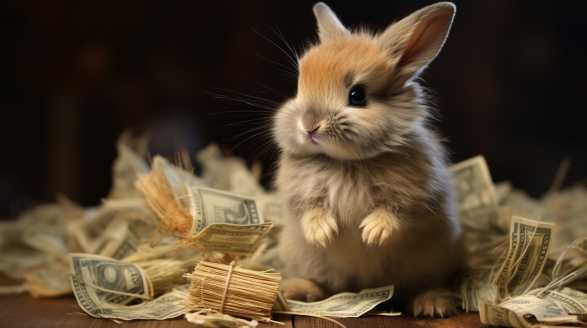
Hey there, fellow pet enthusiasts! Have you ever wondered what it takes to raise a rabbit from a cute little bunny to a majestic and mischievous adult?
Whether you’re a first-time rabbit parent or considering adding another fluffy friend to your family, let’s dive right in and explore the expenses involved in this delightful journey.
The Initial Investment
Before you bring home your bouncing ball of fur, there are a few expenses you need to consider. Here’s a breakdown of the initial investment involved in rabbit ownership:
- Purchase Price: The cost of acquiring a rabbit can vary depending on the breed, age, and where you purchase it from. On average, you can expect to spend between $20 and $100 for a rabbit.
- Cage or Hutch: Providing a comfortable and secure living space for your rabbit is essential. A suitable cage or hutch can cost anywhere from $50 to $200, depending on the size and quality.
- Litter Box and Bedding: Rabbits are naturally clean animals, and providing them with a litter box and suitable bedding is a must. You can find litter boxes for around $10 and bedding for around $20 for a 20-pound bag.
- Food and Water Dishes: Don’t forget to feed and hydrate your little friend! Food and water dishes can cost between $5 and $20, depending on the material and design.
- Toys and Enrichment: Keeping your rabbit entertained and mentally stimulated is crucial for their well-being. Toys and enrichment items can range from $5 to $30, depending on the complexity and quality.
Ongoing Costs
Once you’ve got all the essential items, it’s time to explore the day-to-day expenses of rabbit ownership. Here’s what you can expect to budget for:
- Food: A healthy and balanced diet is key to your rabbit’s health. On average, you may spend around $20 to $50 per month on hay, pellets, and fresh vegetables. Remember, rabbits have sensitive digestive systems, so proper nutrition is vital.
- Veterinary Care: Just like any other pet, rabbits require regular veterinary check-ups and vaccinations. Annual vaccinations can cost between $50 and $100, and check-up fees can range from $25 to $50 per visit. However, unforeseen illnesses or injuries can lead to additional expenses.
- Grooming: Rabbits are known for their fast-growing nails and teeth. Regular grooming, including nail trims and teeth checks, may cost you around $10 to $20 per session if you don’t feel comfortable doing it yourself.
- Bedding and Litter: Don’t forget to keep your rabbit’s living space clean and odor-free! Budget around $10 to $20 per month for bedding and litter supplies.
- Toys and Enrichment: Rotating toys and keeping your rabbit mentally stimulated is essential to avoid boredom. Plan to spend around $10 to $20 per month on new toys.
Unexpected Expenses and Additional Considerations
While we’ve covered the typical costs associated with rabbit ownership, it’s vital to remember that unexpected expenses can arise at any time. Here are a few additional considerations to keep in mind:
Veterinary Emergencies
Pets, including rabbits, can fall ill or experience accidents. Veterinary emergencies can quickly become costly, ranging from $500 to $2,000 depending on the severity of the situation.
Rabbit-Proofing
Rabbits are curious creatures and love to chew on things. To protect your furniture, electrical cords, and other valuable items, rabbit-proofing your home is a must.
Spaying or Neutering
Spaying or neutering your rabbit is highly recommended not only to prevent unwanted litters but also for their health. This procedure can cost between $100 and $300, depending on your location and the veterinary clinic.
The Joys of Rabbit Ownership
Despite the potential costs, the joys of having a rabbit as part of your family are immeasurable. From their playful antics to their soft fur and adorable hop, the love and companionship they provide are priceless.
Raising a rabbit from a little bunny to a full-grown adult comes with its fair share of expenses. From the initial investment in housing, food, and supplies to ongoing costs such as food, veterinary care, and grooming, it’s essential to budget accordingly.
With proper planning and love, your rabbit will bring endless joy and companionship, making every penny spent worthwhile. So, are you ready to embrace the rabbit-loving journey and join the ranks of proud and happy rabbit parents?
Conclusion
Wow, what a wild ride it has been exploring the world of rabbit ownership and the costs involved! From the initial investment to the ongoing expenses, there is no denying that owning a rabbit requires careful planning and budgeting.
I’ve learned that adopting a rabbit can be a more affordable option, with adoption fees ranging from $50 to $200. And when it comes to housing and supplies, there are options for every budget, from basic wire cages to luxurious multi-level condos or DIY creations.
But it’s not just the financial aspect that makes rabbit ownership so rewarding. The joy and love that rabbits bring into our lives are truly priceless.
Sure, there might be unexpected expenses along the way, like veterinary care or unforeseen emergencies. But with proper planning, preventive measures, and a little bit of saving, you can navigate these challenges and provide the best care for your furry friend.
So, if you’re ready to embark on this journey, I encourage you to dive in and experience the incredible joys that come with being a rabbit owner. Embrace the responsibility, the love, and the bond that will undoubtedly grow between you and your bunny.
So hop on over and let the adventure begin! Your fluffy companion is waiting for you, ready to hop into your heart and fill your home with love, laughter, and endless bunny cuddles.
Welcome to the wonderful world of rabbit ownership!
Frequently Asked Questions
How much does it cost to buy a rabbit?
The cost of buying a rabbit can vary depending on the breed, age, and location. On average, you can expect to spend anywhere from $20 to $200 for a pet rabbit.
Are there any ongoing costs of owning a rabbit?
Yes, owning a rabbit comes with ongoing costs. You will need to budget for expenses such as food, bedding, toys, hay, vegetables, and regular vet check-ups.
What other expenses should I consider when getting a rabbit?
In addition to the basic ongoing costs, you should also consider one-time expenses like a cage or hutch, water bottles, litter boxes, and spaying or neutering your rabbit. These initial costs can range from $100 to $400 depending on the quality and size of the items you choose.
How much does it cost to care for a rabbit’s health?
Routine veterinary care for a rabbit, including vaccinations and check-ups, can cost anywhere from $50 to over $200 per year. However, this cost may vary depending on your location and the specific veterinary services required.
Are there any hidden costs associated with owning a rabbit?
Yes, there can be some additional unexpected costs associated with owning a rabbit. Emergency veterinary care, especially in case of illness or accidents, can be quite expensive.
Can I adopt a rabbit instead of buying one?
Yes, adopting a rabbit from a rescue or animal shelter is a great option. The cost of adoption is usually lower than buying a rabbit, and it often includes spaying/neutering and initial vaccinations.
Are there any ongoing costs associated with adopting a rabbit?
Yes, similar to owning a bought rabbit, adopting a rabbit also comes with ongoing costs. You will need to budget for food, bedding, toys, hay, vegetables, and regular vet check-ups, just like with a purchased rabbit. The average monthly costs for these items can range from $30 to $60 per month.
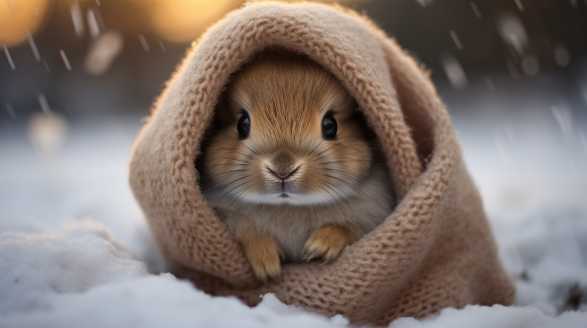
How To Keep Rabbits Warm in The Winter
Introduction Hey there, fellow rabbit lovers! Winter is just around the corner, and as responsible bunny owners, it’s essential for us to ensure the well-being and comfort of our adorable companions. Winter can be a bit challenging for rabbits, who are sensitive creatures that require extra care to thrive in low temperatures. From managing humidity […]

When Do Pregnant Rabbits Start Nesting
Introduction When do pregnant rabbits start nesting? Let’s find out. Picture this: a fluffy, adorable rabbit, with a twinkle in her eye and a bulging belly, embarking on a magical quest to prepare for the arrival of her precious little kits. As a passionate rabbit lover, I couldn’t resist delving into the secrets behind their […]

Do Rabbits Have Paw Pads
Introduction Do rabbits have paw pads? You’re about to find out. Picture this: you’re sitting in your garden, watching a rabbit hop gracefully across the grass. It effortlessly moves through the terrain, avoiding obstacles with precision and ease. Those paw pads, my friends, are like the unsung heroes of the rabbit kingdom – soft, sensitive, […]
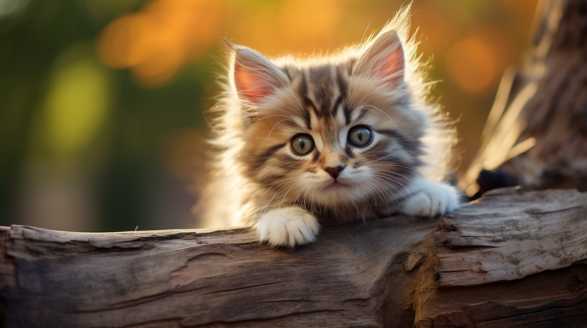
Are Cats And Rabbits Related
Introduction Hey there, animal enthusiasts! Are you ready for a wild ride into the world of genetic connections and surprising similarities? You heard that right – these seemingly unrelated creatures may just have more in common than meets the eye! Picture this: a majestic lion and a cute little bunny hopping through the fields together. […]
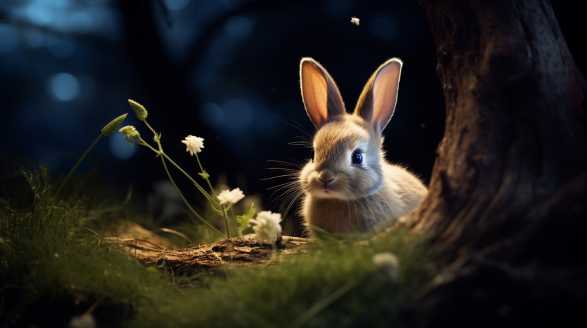
Are Rabbits Nocturnal
Introduction Are rabbits nocturnal? Let’s find out. With its fluffy tail and twitching nose, the rabbit has become the star of my wildlife exploration. But what truly fascinates me is their nocturnal behavior. Imagine venturing into the depths of night to witness their hidden world come to life. It’s like finding a secret portal to […]
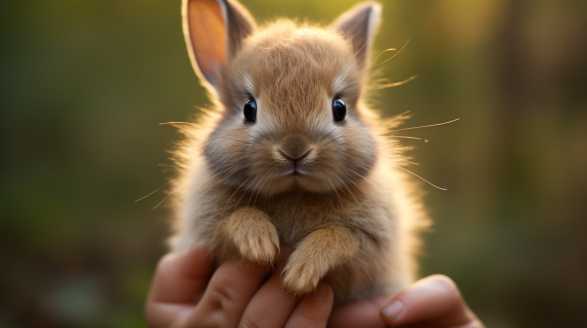
When Do Baby Rabbits Get Fur
Introduction Hey there, fellow rabbit enthusiasts! If you’re like me, there’s nothing more enchanting than watching baby rabbits grow from their hairless, vulnerable state to becoming adorable, furry balls of joy. we’ll take a deep dive into the development of fur in newborn rabbits, exploring their timeline from birth to fluffiness. From the moment they […]
